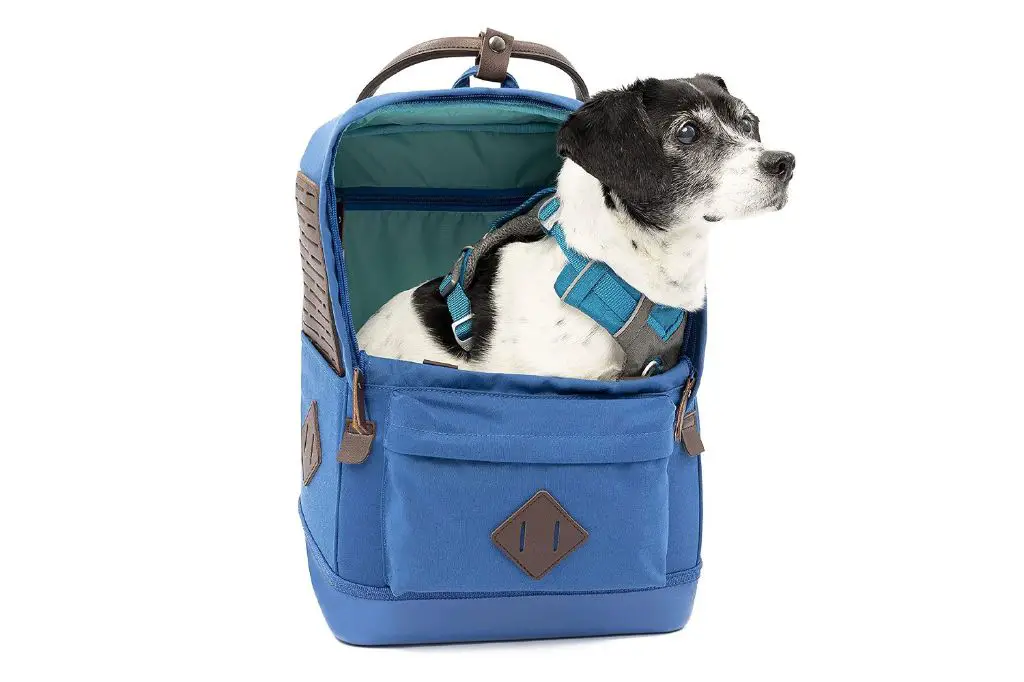Introduction
Front-facing dog carriers, also known as forward-facing carriers, are specially designed backpacks and carriers that allow the dog to sit facing outward. Unlike traditional dog bags and backpacks where the dog faces the wearer’s back, front-facing carriers position the dog so their head, front legs and chest are outside the carrier. This allows the dog to have an outwards-looking view of their surroundings.
The purported benefits of front-facing carriers include allowing the dog to observe their environment and participate in activities with their owner. Since the dog’s head is turned forward, some owners feel their pet can more actively enjoy walks, hikes, outdoor events, and other outings while being safely contained in the carrier. Front-facing dog carriers also allow owners to bond with their pet and easily interact while carrying them.
Pros of Front-Facing Carriers
One of the main benefits of front-facing dog carriers is that they allow owners to keep their dog close to their body. The physical closeness can provide comfort and security for anxious or nervous dogs who feel safest in their owner’s arms.

Additionally, front-facing carriers allow owners to easily monitor their dog’s body language and stress signals. Being face-to-face makes it easier to notice things like lip licking, yawning, whale eye, and other signs that a dog may be getting overwhelmed. This gives owners the opportunity to promptly respond and prevent situations from escalating.
Cons of Front-Facing Carriers
While front-facing dog carriers allow you to keep an eye on your pet, they do come with some potential downsides to consider:
One of the main drawbacks of front-facing carriers is the extra weight placed on the owner’s chest and upper body. Having your dog’s weight concentrated on your chest can cause strain, fatigue, and even pain in your neck, shoulders, and upper back over time. This is especially true for larger dog breeds, as the greater weight shift to your front can throw off your center of gravity and posture.
Front-facing carriers can also pose a risk of restricted airflow and overheating if the carrier is not designed with breathable mesh panels. Your dog’s body so close to your own can block air circulation, causing them to get hot. This is particularly problematic in warm weather or with dogs that have respiratory issues.
Proper carrier selection, weight limits, and duration of use is key to avoiding the potential strain and overheating risks. But these are important factors to keep in mind, as the cons can outweigh the benefits of front-facing carriers for some owners and pets.
Weight Considerations
One of the most important factors in determining if a front-facing dog carrier will be safe and comfortable for you and your dog is the weight of your pup relative to your own size and strength. While these carriers can hold dogs up to around 20 pounds, that does not mean they are an appropriate choice for every person and pooch pairing.

Heavier dogs inherently have a higher risk of causing posture and back problems if carried incorrectly or for too long in front carriers. The back and neck strain can become severe, and lead to serious musculoskeletal injuries over time. Larger dogs have more momentum and shifting weight that your body constantly has to stabilize and account for.
Additionally, the size of your dog relative to the size of your frame makes a big impact on safety. A 20 pound dog may be easy for some people to carry against their torso, while too large and heavy for others. Smaller framed individuals and those new to strength training often cannot safely manage larger dogs in these carriers without injury.
As a general rule, dogs should not exceed 20-25% of your own body weight to be carried in front-facing devices. However, listen to your own body and stop immediately if you experience pain, strain, or imbalance. Consider a rear-facing backpack carrier or stroller for heavier pups to minimize risk. Discuss any concerns with your veterinarian as well.
Carrier Design Factors
The design of a front-facing dog carrier can influence its safety. Look for a carrier with the following features:
Padded, adjustable straps – The shoulder and waist straps should be padded to prevent shoulder, neck and back pain. They should also be adjustable to achieve the proper fit for your body and keep weight distributed evenly. Avoid thin, digging straps that concentrate force in small areas.
Mesh panels – Mesh side panels promote airflow so your dog doesn’t overheat while in the carrier against your body. Proper ventilation prevents panting, restlessness and excessive temperature rise.
Rigid or semi-rigid structure – A carrier should retain its shape and not collapse around your dog. Some structural panels or frames help support the dog’s weight and prevent the fabric from sagging or drooping.
Choosing a thoughtfully designed carrier optimized for comfort and ventilation will help make the experience safer for you and your dog.
Proper Fit and Positioning
To keep your dog safe and comfortable in a front-facing carrier, proper fit and positioning are key. The carrier should be snug enough to support your dog’s weight, but not so tight that it restricts breathing in any way. Make sure there is adequate room for your dog to comfortably fit their head through the neck opening without strain.

The dog’s weight should be centered on the owner’s torso. If the weight is too far forward or back, it can throw off your balance and cause back or shoulder strain. Check that straps are tightened correctly so the carrier fits close to your body. Padding between you and the dog can also help stabilize the load.
Pay attention to your dog’s nose and mouth positioning. Their airways should never be compressed or covered. Many front carriers come with a raised platform or support rod to keep your dog’s head safely tilted up. Monitor them frequently and watch for signs of labored breathing, gagging, struggling or distress.
Activities and Duration
When using a front-facing dog carrier, it’s important to limit the duration of walks for heavier dogs. The weight on the front can strain your back and shoulders over time. Take regular breaks to set your dog down during longer walks. A good rule of thumb is to limit continuous carrying time to 30 minutes or less for dogs over 15 pounds.
You’ll also want to remove the dog carrier for any strenuous or high-impact activities. The jostling motions of running, jumping, or similar activities puts more force on your dog’s body in that front-facing position. Save those activities for when your dog can move freely without the carrier. Opt for lower-impact activities like walking, standing, or sitting when your dog is in the front-facing carrier.
Signs of Trouble
While front-facing dog carriers allow for increased bonding and interaction between a dog and its owner, there are some signs to watch out for that may indicate the carrier is unsafe or causing undue stress for the dog or human:
In the dog:
- Raspy or labored breathing – This could signal that the dog’s airway is constricted or they are overheating.
- Lethargy – If the dog seems overly tired or unresponsive, they may be uncomfortable or overexerted.
In the human:
- Back or neck pain – Carrying added weight on the front of the body can strain the back and neck muscles.
- Muscle fatigue – Wearing a dog carrier uses more muscles than regular walking or hiking. Fatigue can set in quickly.
Paying attention to signs of trouble allows the owner to adjust the carrier, take breaks, provide water, or stop using it altogether to prevent injury or distress to the dog or themselves.
Alternatives to Balance Safety
While front-facing dog carriers can be safe if used properly for limited periods, there are some alternatives to help balance safety and comfort on longer outings:
Switching to a Back-Mounted Carrier
For longer walks or hikes, consider switching your dog to a back-mounted carrier instead. These distribute the weight across your back and shoulders rather than compressing your chest and abdomen. Look for a sturdy backpack-style carrier with multiple straps and solid construction. Make sure to introduce your dog slowly to being carried on your back.
Using a Stroller or Wagon

For small and medium dogs, strollers and wagons can be an excellent option for longer durations. Look for versions designed specifically for pets that have a sturdy but padded interior. These allow your dog to lie down comfortably during the ride. Wagons also have the benefit of letting your dog have some fresh air. Just be mindful of the extra space they take up.
By alternating between short front-carrying and safer options for long distances, you can find the right balance for you and your dog.
Conclusion
In summary, front-facing dog carriers can be a safe option for pet owners when used properly. The key factors are choosing an ergonomic carrier designed for your dog’s size and weight, ensuring a snug and centered fit to distribute weight across your core, limiting time worn to avoid fatigue, and paying close attention to signs of discomfort in either you or your dog. With proper precautions, front carriers allow many owners to bring their small dogs along in a convenient and bonding way. Ultimately, proper use matters more than breed restrictions – any owner’s physical abilities should be considered above judging entire breeds as incompatible. Focus on your individual dog’s build, weight, anxiety levels and your personal strength and stamina to determine if a front carrier can be safe for you both.